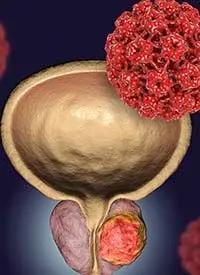Article
Investigators develop tool to assess PROs in patients undergoing RNT for prostate cancer
Author(s):
FACT-RNT is the first tool to measure patient reported outcomes associated with radionuclide therapy for prostate cancer.
““The field of radionuclide therapy (RNT) for prostate cancer (PC) is growing rapidly," wrote the authors.

Investigators from Moffitt Cancer Center in Tampa, Florida have developed a tool to monitor relevant patient-reported outcomes (PROs) associated with treatment of radionuclide therapy (RNT), a new class of prostate cancer therapies.1 Their findings were published in The Journal of Nuclear Medicine.2
RNT is a radiation therapy that combines a radionuclide to a cell-targeting molecule. Once the combination is injected into the body, the cell-targeting molecule seeks out prostate cancer cells, and the radionuclide “payload” irradiates and kills nearby cells.
“The field of radionuclide therapy (RNT) for prostate cancer (PC) is growing rapidly with recent FDA approval of the first Lutetium-177-PSMA-ligand,” wrote the authors.
For the study, investigators first identified relevant symptoms and adverse events (AEs) experienced by patients undergoing RNT for prostate cancer by gathering data from both published trials and interviews with patients (n = 29), caregivers (n = 14), and clinicians (n = 11). They then selected items for inclusion with input from experts in RNT and PROs.
“We were thorough in determining which symptoms and [adverse events] are important to patients receiving RNT for prostate cancer,” said lead author Lisa M. Gudenkauf, PhD, in a news release on the data. Gudenkauf is a research scientist in the Department of Health Outcomes and Behavior at Moffitt Cancer Center.
From these data, the team was able to develop a 15-item questionnaire to measure symptoms and AEs associated with RNT called the Functional Assessment of Cancer Therapy – Radionuclide Therapy (FACT-RNT). Symptoms and AEs measured through FACT-RNT include dry mouth, nausea, loss of appetite, bone pain, fatigue, and feelings of isolation due to illness/treatment. This is the first PRO measure developed for patients with prostate cancer receiving RNT.
“The FACT-RNT will help future researchers better understand the impact of RNT and other therapies on quality of life in patients with prostate cancer,” said senior author Brian Gonzalez, PhD, in the news release. Gonzalez is an associate member of the Department of Health Outcomes and Behavior at Moffitt Cancer Center.
The team at Moffitt hopes that this tool can be used to guide treatment decisions, improve quality of care for patients with prostate cancer, and lead to a more patient-centered approach.
References
1. Moffitt researchers develop tool to measure patient health and well-being after radionuclide therapy. News release. Moffitt Cancer Center. Published online January 19, 2023. Accessed January 26, 2023. https://www.newswise.com/articles/moffitt-researchers-develop-tool-to-measure-patient-health-and-well-being-after-radionuclide-therapy?sc=sphr&xy=10016681
2. Gudenkauf LM, Chavez M, Maconi ML, et al. Developing a novel patient reported outcomes measure for prostate cancer patients receiving radionuclide therapy. J Nucl Med. 2023;jnumed.122.264946.doi: 10.2967/jnumed.122.264946

















